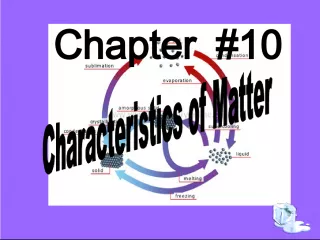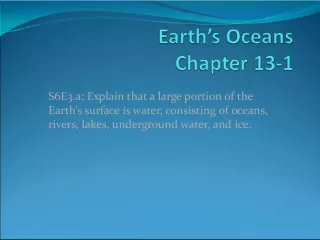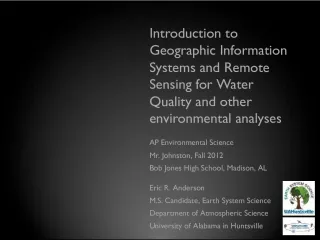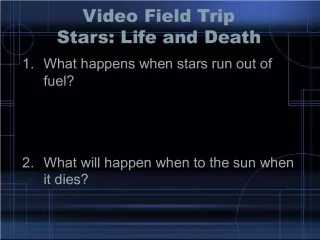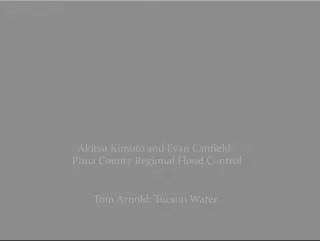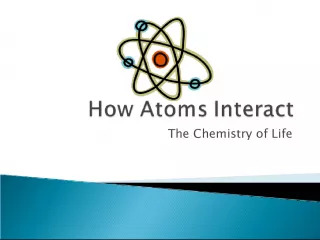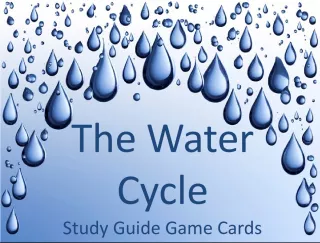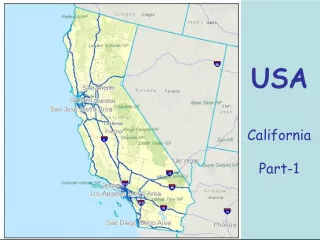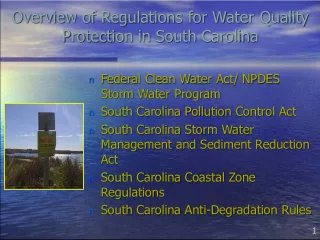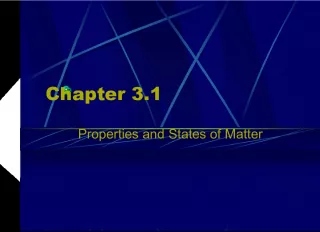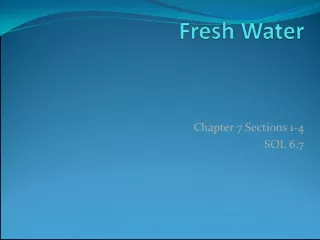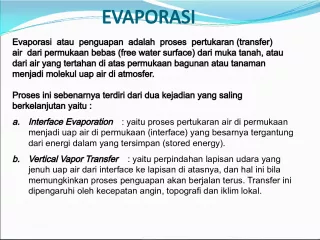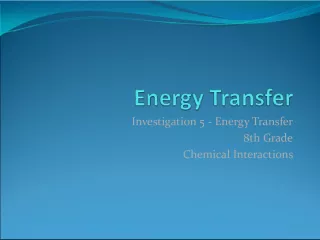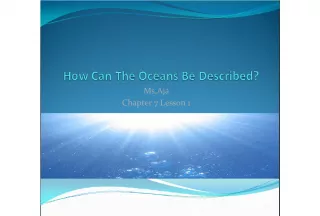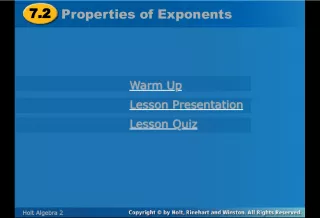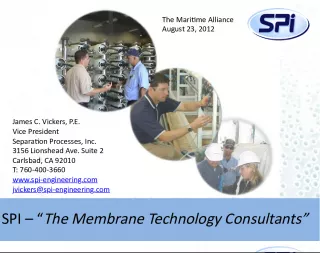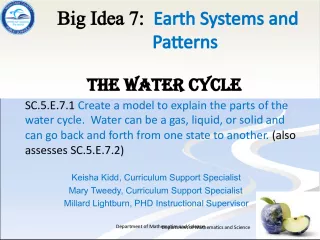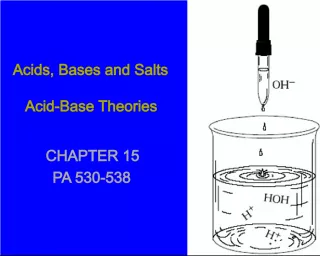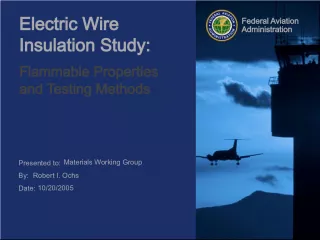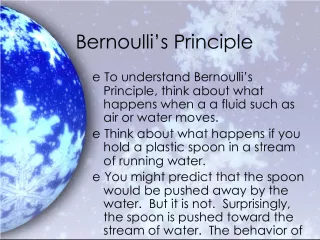Exploring Properties of Water and pH: Part 1
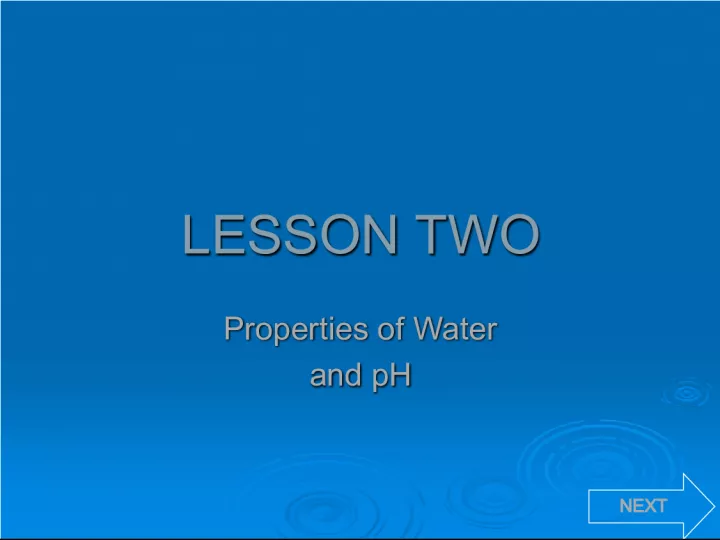

In this lesson, we delve into the properties of water and how it impacts pH levels. Through a comprehensive review of information about water properties, students will complete a flowchart
- Uploaded on | 0 Views
-
 marta
marta
About Exploring Properties of Water and pH: Part 1
PowerPoint presentation about 'Exploring Properties of Water and pH: Part 1'. This presentation describes the topic on In this lesson, we delve into the properties of water and how it impacts pH levels. Through a comprehensive review of information about water properties, students will complete a flowchart. The key topics included in this slideshow are . Download this presentation absolutely free.
Presentation Transcript
Slide1LESSON TWO LESSON TWO Properties of Water Properties of Water and pH and pH NEXT
Slide2Part 1: Properties of Water Part 1: Properties of Water Review the following information about the properties of water to complete your flowchart. Review the following information about the properties of water to complete your flowchart. NOTE: NOTE: Some of the slides will take you to internet resources filled with additional information Some of the slides will take you to internet resources filled with additional information Some of the slides may contain links to definitions Some of the slides may contain links to definitions NEXT
Slide3Molecular Structure & Polarity Molecular Structure & Polarity Water is a "polar" molecule, meaning that there is an uneven distribution of electrons resulting in a molecule with a both a positively and negatively charged region. Water is a "polar" molecule, meaning that there is an uneven distribution of electrons resulting in a molecule with a both a positively and negatively charged region. Water has a partial negative charge near the oxygen atom due the unshared pairs of electrons, and partial positive charges near the hydrogen atoms. Water has a partial negative charge near the oxygen atom due the unshared pairs of electrons, and partial positive charges near the hydrogen atoms. Covalent Bond **Click on “Covalent Bond” for the definition. NEXT
Slide4Definitions…• Covalent Bond – when two atoms share one or more electrons – In a water molecule, each hydrogen atom is covalently bonded to the oxygen via a shared pair of electrons. RETURN
Slide5Hydrogen Bonds Hydrogen Bonds Hydrogen Bond – the electrostatic attraction between the partial positive charge near the hydrogen atoms and the partial negative charge near the oxygen Hydrogen Bond – the electrostatic attraction between the partial positive charge near the hydrogen atoms and the partial negative charge near the oxygen How one water molecule “sticks” to another How one water molecule “sticks” to another NEXT
Slide6Let’s review so far! Let’s review so far! Click on the bucket of water below to watch the short animation on water. Click on the bucket of water below to watch the short animation on water. Click on “NEXT” when you are finished. Click on “NEXT” when you are finished. NEXT
Slide7Surface Tension & Capillary Action Surface Tension & Capillary Action Click on the picture of the celery to the right to learn about surface tension, cohesion, adhesion, and capillary action! Click on the picture of the celery to the right to learn about surface tension, cohesion, adhesion, and capillary action! After visiting the website, click on the arrow to move on to the next slide. After visiting the website, click on the arrow to move on to the next slide. NEXT
Slide8Universal Solvent Universal Solvent Water is called the "universal solvent" because it dissolves more substances than any other liquid. Water is called the "universal solvent" because it dissolves more substances than any other liquid. This means that wherever water goes, either through the ground or through our bodies, it takes along valuable chemicals, minerals, and nutrients. This means that wherever water goes, either through the ground or through our bodies, it takes along valuable chemicals, minerals, and nutrients. NEXT
Slide9Universal Solvent Universal Solvent What is the difference between a solvent , solute , and a solution ? What is the difference between a solvent , solute , and a solution ? Click on each word to find out! Click on each word to find out! Click on “NEXT” when you are all finished. Click on “NEXT” when you are all finished. NEXT
Slide10SOLVENT• Definition = A substance that dissolves a solute to create a solution. – Identify the solvent below by clicking on the correct answer. Chocolate Chocolate Milk Milk
Slide11SORRY!Click here to try again! Remember to look closely at the definition! What would be doing the dissolving?
Slide12SOLUTE• Definition = A substance that is dissolved in a solvent to create a solution. – Identify the solute below by clicking on the correct answer. Chocolate Chocolate Milk Milk
Slide13SORRY!Click here to try again! Remember to look closely at the definition! What would be dissolved?
Slide14SOLUTION• Definition = A mixture of two or more substances in which he molecules of the substances are evenly distributed – Identify the solution below by clicking on the correct answer. Chocolate Chocolate Milk Milk
Slide15SORRY!Click here to try again! Remember to look closely at the definition! What would be the mixture?
Slide16CONGRATULATIONS!You were right! Click here to continue learning about solvents, solutes, and solutions!
Slide17DensityDensity Ice floats because hydrogen bonds hold water molecules further apart in a solid than in a liquid. Ice floats because hydrogen bonds hold water molecules further apart in a solid than in a liquid. Ice is less dense as a solid than a liquid. Ice is less dense as a solid than a liquid. NEXT
Slide18Heat Capacity Heat Capacity Water has a HIGH heat capacity (it takes a lot of energy to raise its temperature) Water has a HIGH heat capacity (it takes a lot of energy to raise its temperature) WHY??? WHY??? because the energy needs to first break the hydrogen bonds before it can raise the temperature of the water. because the energy needs to first break the hydrogen bonds before it can raise the temperature of the water. NEXT
Slide19Read the following slides to review what pH is and to complete your pH scale… Read the following slides to review what pH is and to complete your pH scale… Part 2: Acids and Bases Part 2: Acids and Bases NEXT
Slide20What is pH? What is pH? pH is a measure of how acidic/basic a solution is. The range goes from 0 - 14, with 7 being neutral. pHs of less than 7 indicate acidity, whereas a pH of greater than 7 indicates a base. pH is a measure of how acidic/basic a solution is. The range goes from 0 - 14, with 7 being neutral. pHs of less than 7 indicate acidity, whereas a pH of greater than 7 indicates a base. NEXT
Slide21The pH Scale The pH Scale 1. Label your pH scale to show the proper ranges of acids, bases, and neutral. 1. Label your pH scale to show the proper ranges of acids, bases, and neutral. 2. Click on the clipboard to test the pH value of the substances listed on your worksheet. Record their value by placing the substance at their appropriate location on your pH scale. 2. Click on the clipboard to test the pH value of the substances listed on your worksheet. Record their value by placing the substance at their appropriate location on your pH scale. Click on “NEXT” when you are all finished. Click on “NEXT” when you are all finished. NEXT
Slide22Part 3: Review! Part 3: Review! Now it is time to review what you have learned in Lesson 2… Now it is time to review what you have learned in Lesson 2… Click on the dice below to play the vocabulary matching game. Click on the dice below to play the vocabulary matching game. If you get stuck, review the list of vocabulary words and try again! If you get stuck, review the list of vocabulary words and try again!
